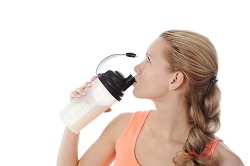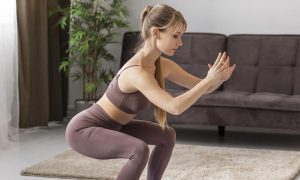By Emily C. Harrison MS, RD, LD
Even mild dehydration can affect performance. Staying hydrated is extremely important to a dancer’s performance because the first signs of dehydration are fatigue and poor balance. Thirst actually only kicks in after the body has lost 1-2 liters of water. If you are thirsty then you are already dehydrated.
The science:
Water makes up approximately 60% of body weight and is the largest component of the human body. The muscles we work so hard to develop as dancers (skeletal muscles) are about 73% water, your blood is about 93% water and even bones and teeth contain some water. Water is critical for maintaining homeostasis within the body and important in the thousands of biochemical and physiological functions our bodies go through every day. Water aids in digestion and is important in the transport and elimination systems of the body.
Overheating and performance:
It’s important for dancers to know that being properly hydrated helps keep the body from overheating. Helping the body promote heat loss when dancing full out will improve athletic performance and aid in recovery. This is especially important for dancers wearing hot costumes and performing under stage lights. Sweat losses during performance can be significantly more than during rehearsal of the same piece. This is why drinking regularly (even small, regular sips) is an important habit during a show.
How much is really needed? Can a dancer get fluids from other things besides water?
The American College of Sports Medicine recommends that athletes (we all know that dancers are athletes) start their exercise already hydrated with about 17 ounces of beverage taken before you begin. Then drink 5-10 ounces every 20 minutes or so. This means that your reusable water bottle should be your constant companion in the studio or backstage. Every dancer is a little different but pre-professional and professional level dancers should aim for about 2800-3500ml (94-117 oz) of fluids every day. That’s about 12 – 15 cups. About 20-25% will come from foods like fruits and veggies, but about 80% comes from what you drink. Aim to get most of your fluids through water, but juices, sports beverages, and even tea and coffee can be counted toward that goal. Some dancers find that mixing 50% sports beverage with 50% water in their reusable bottles helps them get through long rehearsals or classes. This is because sports beverages contain a source of readily available energy (calories) and electrolytes that are lost in sweat.
But I want something besides just water…..
Prevent dehydration by eating lots of fruits and veggies. Consider melon, squash, oranges, apples, pears, grapes, leafy greens and salads in addition to beverages like tea, whole fruit popsicles, sports beverages, smoothies, soy milk, almond milk, and yogurts.
What about caffeine?
Caffeine makes us more awake and is known to enhance athletic performance. But there can be too much of a “good” thing. Caffeine is a central nervous system stimulant, not a source of energy. Yes, caffeine can also promote water loss and dancers should limit caffeine, but those beverages can still count toward your daily intake. I always recommend limiting or avoiding sodas. They are empty calorie bombs and can make bones weaker. One cup of coffee is fine, but being overly jittery doesn’t help your dancing.
So be good to your body and good to the earth by taking your reusable water bottle with you everywhere and refilling it often.
Emily Harrison
 Emily Cook Harrison MS, RD, LD
Emily Cook Harrison MS, RD, LD
Emily is a registered dietitian and holds both a bachelor’s and master’s degree in nutrition from Georgia State University. Her master’s thesis research was on elite level ballet dancers and nutrition and she has experience providing nutrition services for weight management, sports nutrition, disordered eating, disease prevention, and food allergies. Emily was a professional dancer for eleven years with the Atlanta Ballet and several other companies. She is a dance educator and the mother of two young children. She now runs the Centre for Dance Nutrition and Healthy Lifestyles. She can be reached at emily@dancernutrition.com www.dancernutrition.com















